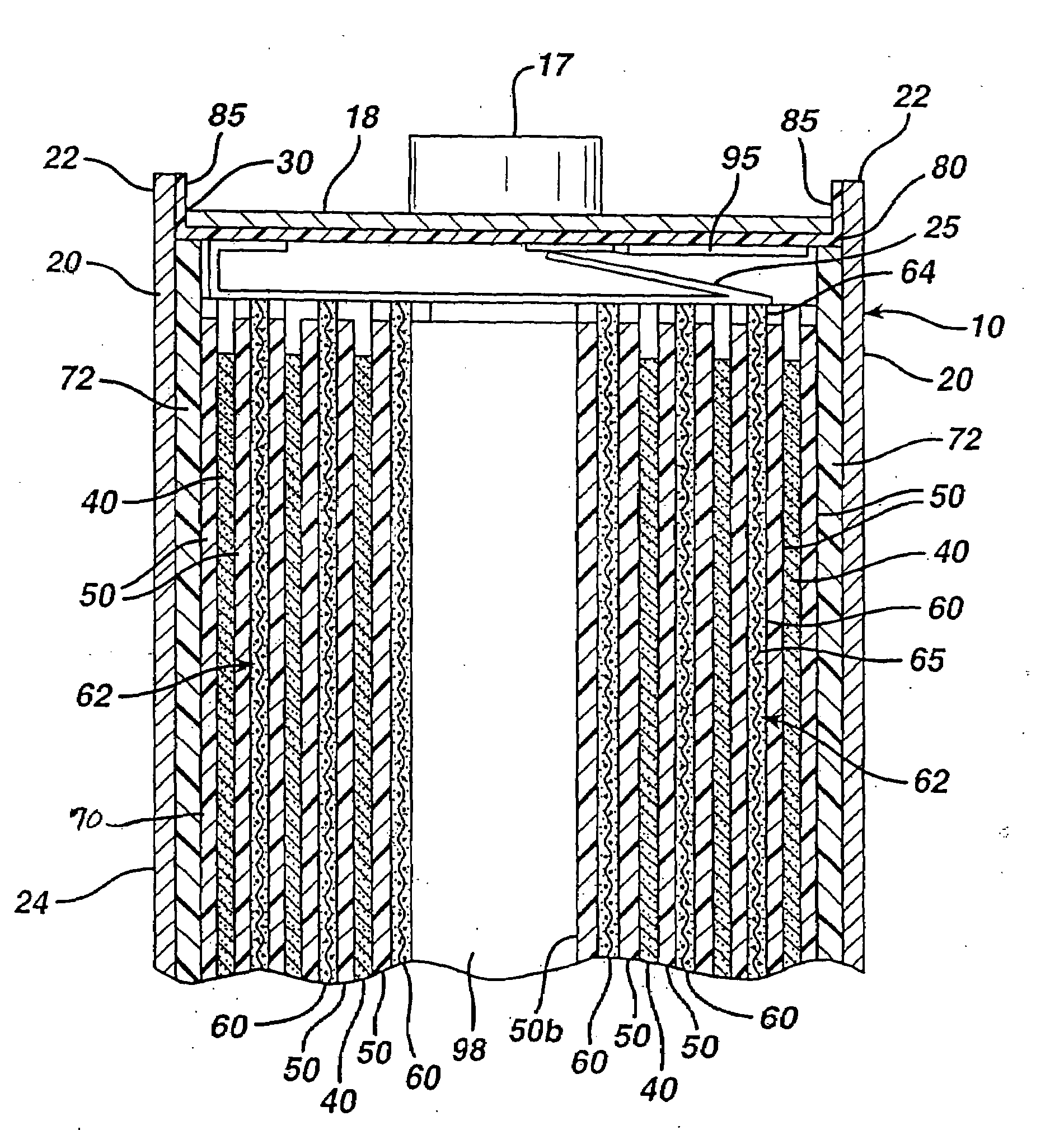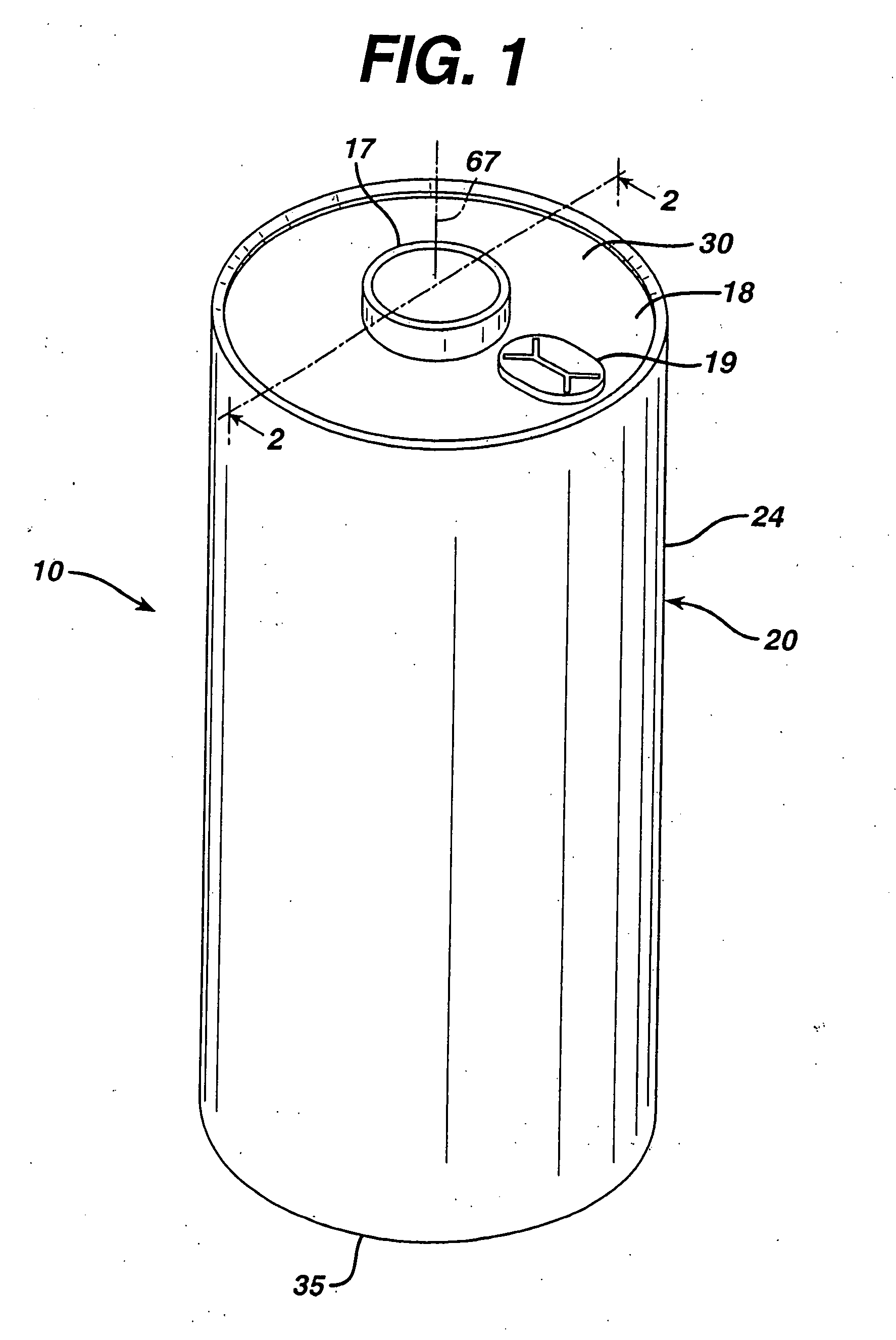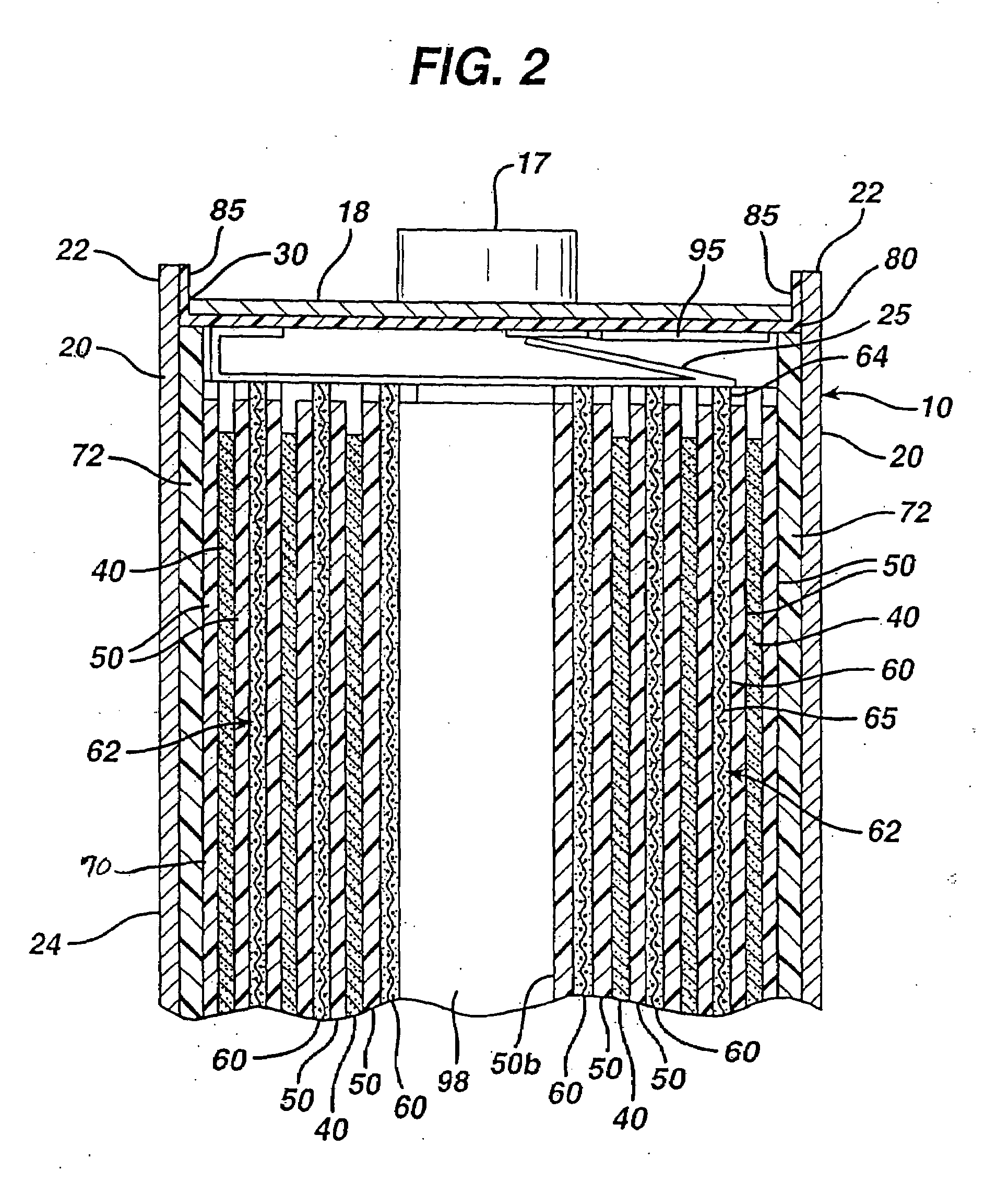Lithium cell
a primary cell and lithium technology, applied in the field of primary cells, can solve the problems of less efficient discharge of cathode active materials than anode active materials, “severing” of electrical contact, and risk of discontinuities on the lithium anode surface as the cell continues, and achieve good affinity and cohesive properties
- Summary
- Abstract
- Description
- Claims
- Application Information
AI Technical Summary
Benefits of technology
Problems solved by technology
Method used
Image
Examples
example
[0066]Test AA size cylindrical cells were made in accordance with the preceding description and are representative of a specific embodiment of the invention. The test AA cells were all identical and made according to the following specifications.
[0067]The cathode was coated in the form of a wet cathode slurry as earlier described herein onto both sides of an aluminum foil substrate 65. The aluminum foil had a thickness of about 15 micron. The wet cathode slurry was coated first on one side of foil substrate 65 and then dried as described herein. The wet cathode slurry was then coated onto the opposite side of substrate 65 and then dried. The dried cathode coatings 60 were then calendered to compress the coating thickness, thus forming a dry coating 60 on both sides of substrate 65 resulting in cathode composite 62. The cathode composite 62 had a total thickness of about 0.124 mm, which includes the thickness of substrate 65 (15 micron) and dry cathode coating 60 on both sides of sub...
PUM
| Property | Measurement | Unit |
|---|---|---|
| interfacial surface area | aaaaa | aaaaa |
| interfacial surface area | aaaaa | aaaaa |
| interfacial surface area | aaaaa | aaaaa |
Abstract
Description
Claims
Application Information
 Login to View More
Login to View More - R&D
- Intellectual Property
- Life Sciences
- Materials
- Tech Scout
- Unparalleled Data Quality
- Higher Quality Content
- 60% Fewer Hallucinations
Browse by: Latest US Patents, China's latest patents, Technical Efficacy Thesaurus, Application Domain, Technology Topic, Popular Technical Reports.
© 2025 PatSnap. All rights reserved.Legal|Privacy policy|Modern Slavery Act Transparency Statement|Sitemap|About US| Contact US: help@patsnap.com



